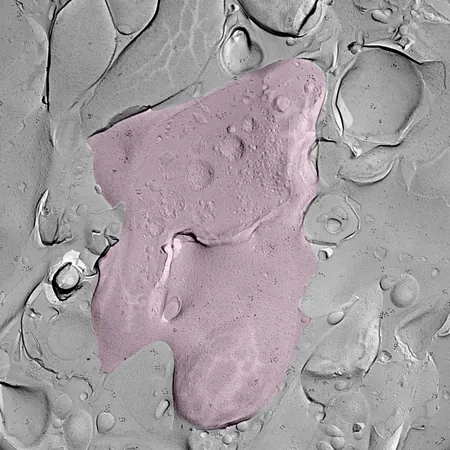
Breakthrough in Memory Research: How the Hippocampus Holds the Key to Our Memories!
2024-11-20
Author: Ming
Recent research has unveiled astonishing details about how our brains process memories, particularly focusing on the hippocampus, a crucial area essential for both memory formation and spatial navigation. Named after the seahorse due to its shape (with "hippos" meaning horse and "kampus" referring to sea monster in Greek), the hippocampus has long been recognized for its role in converting short-term experiences into lasting memories.
A landmark case in memory research involved Henry Gustav Molaison, widely recognized as patient H.M. After undergoing a surgical procedure to alleviate severe epilepsy, H.M. famously lost the ability to form new memories while retaining his past. His story highlighted the hippocampus's integral function in our memory system, shaping decades of neuroscientific research.
New Insights into Memory Processing Mechanisms
A recent study published in *PLOS Biology* by an international team from the Institute of Science and Technology Austria (ISTA) and the Max Planck Institute for Multidisciplinary Sciences has delved into the intricate molecular signals that govern memory processing in the hippocampus. Spearheaded by researchers including Olena Kim and Peter Jonas, this pioneering work used cutting-edge methods to explore the mossy fiber synapse, a critical connection between neurons responsible for memory encoding.
Granule cells, the information-input neurons of the hippocampus, play a vital role in processing external signals and passing them along through their unique extensions, known as mossy fibers. These fibers connect to pyramidal cells at the mossy fiber synapse, where neurotransmitters facilitate communication crucial for memory stability.
What’s truly remarkable is the high adaptability of mossy fiber synapses. This plasticity allows the brain to modify its responses based on experiences, making it possible to differentiate between similar stimuli—like identifying a panther amidst black cats. Such capabilities underline the importance of mossy fiber synapses in memory formation.
Understanding the Molecular Landscape
Investigating how these synapses work at the molecular level, Kim and her team employed innovative techniques, including the "Flash and Freeze" method, designed to analyze live brain tissue. This groundbreaking approach allowed researchers to observe synaptic changes in real time, providing clarity into the structural and functional relationships within mossy fibers.
The study particularly focused on two proteins: Cav2.1 calcium channels and Munc13. These proteins are crucial in neurotransmitter release. The research found that—following stimulation—Cav2.1 and Munc13 moved closer together, significantly enhancing the efficiency of mossy fiber synapses, which in turn supports memory formation.
The Journey to Memory Understanding Continues
This vital research lays a foundation for further exploration of memory mechanisms in the hippocampus and may have implications for understanding memory-related conditions such as Alzheimer’s and other neurodegenerative diseases. As scientists continue to unlock the mysteries of memory, future insights could pave the way for novel therapeutic strategies that help enhance memory retention and repair cognitive functions in those affected by memory impairments.
Stay tuned as we continue to explore how groundbreaking neuroscience research is reshaping our understanding of the brain and its incredible capacity for memory!


 Brasil (PT)
Brasil (PT)
 Canada (EN)
Canada (EN)
 Chile (ES)
Chile (ES)
 España (ES)
España (ES)
 France (FR)
France (FR)
 Hong Kong (EN)
Hong Kong (EN)
 Italia (IT)
Italia (IT)
 日本 (JA)
日本 (JA)
 Magyarország (HU)
Magyarország (HU)
 Norge (NO)
Norge (NO)
 Polska (PL)
Polska (PL)
 Schweiz (DE)
Schweiz (DE)
 Singapore (EN)
Singapore (EN)
 Sverige (SV)
Sverige (SV)
 Suomi (FI)
Suomi (FI)
 Türkiye (TR)
Türkiye (TR)